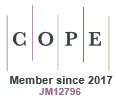George Adrian Horridge (1927–2024)
Mandyam V. Srinivasan A *
A *
A
Abstract
Adrian Horridge is famous for his pioneering studies of invertebrate vision, wherein he used a variety of techniques, including optical analysis of the eyes, electrophysiology of the visual pathways, investigation of behaviour, and development of mathematical models of visual capacity and performance. Born, raised and educated in the United Kingdom, Horridge moved to Australia in the late 1960s to take up a position as a Founding Professor of the Australian National University’s Research School of Biological Sciences. He established a thriving department of neurobiology, which became one of the world’s leading entities in this field. He went on to establish a Centre for Visual Science at the university to foster collaboration across several laboratories on campus. This ultimately led to the establishment of a very successful Australian Centre for Excellence in Vision Science, funded by the Australian Research Council and including participation from other laboratories across Australia, as well from overseas. He was elected to Fellowship of the Royal Society (1969) and the Australian Academy of Science (1971). Horridge continued to study and publish the results of his investigations on insect vision well beyond the date of his official retirement. He has received several awards and honours in recognition of his work. Horridge is also known for his studies in another quite unrelated field—the design of Indonesian sailing craft from antiquity to the twentieth century.
Keywords: behaviour, compound eye, electrophysiology, insect, invertebrate, neurobiology, ommatidium, optics, vision.
References
Avarguès-Weber, A., de Brito Sanchez, M. G., Giurfa, M., and Dyer, A. G. (2010) Aversive reinforcement improves visual discrimination learning in free-flying honeybees, PLoS One, 5(10), e15370.
| Crossref | Google Scholar | PubMed |
Horridge, G. A. (1951) Occurrence of Asparagopsis armata harv. on the scilly Isles, Nature, 167(4253), 732-733.
| Crossref | Google Scholar |
Horridge, A. (1953) An action potential from the motor nerves of the jellyfish Aurellia aurita Lamarck, Nature, 171(4348), 400.
| Crossref | Google Scholar | PubMed |
Horridge, G. A. (1955) A polarized light study of glass fibre laminates, British Journal of Applied Physics, 6(9), 314.
| Crossref | Google Scholar |
Horridge, G. A. (1956a) The flight of very small insects, Nature, 178(4546), 1334-1335.
| Crossref | Google Scholar |
Horridge, G. A. (1956b) A through-conducting system co-ordinating the protective retraction of Alcyonium (Coelenterata), Nature, 178(4548), 1476-1477.
| Crossref | Google Scholar |
Horridge, G. A. (1957) Responses of Cerianthus to stimulation, Nature, 180(4598), 1369-1370.
| Crossref | Google Scholar |
Horridge, G. A. (1958) Transmission of excitation through the ganglia of Mya (Lamellibranchiata), The Journal of Physiology, 143(3), 553-572.
| Crossref | Google Scholar | PubMed |
Horridge, G. A. (1960) Pitch discrimination in Orthoptera (Insecta) demonstrated by responses of central auditory neurones, Nature, 185(4713), 623-624.
| Crossref | Google Scholar | PubMed |
Horridge, G. A. (1961) The centrally determined sequence of impulses initiated from a ganglion of the clam Mya, The Journal of Physiology, 155(2), 320-336.
| Crossref | Google Scholar | PubMed |
Horridge, G. A. (1962a) An annelid proprioceptor, Nature, 195(4839), 403.
| Crossref | Google Scholar |
Horridge, G. A. (1962b) Learning of leg position by headless insects, Nature, 193(4816), 697-698.
| Crossref | Google Scholar |
Horridge, G. A. (1966a) Optokinetic responses of the crab, Carcinus to a single moving light, Journal of Experimental Biology, 44(2), 263-274.
| Crossref | Google Scholar |
Horridge, G. A. (1966b) Direct response of the crab Carcinus to the movement of the sun, Journal of Experimental Biology, 44(2), 275-283.
| Crossref | Google Scholar |
Horridge, G. A. (1977a) Insects which turn and look, Endeavour, 1(1), 7-17.
| Crossref | Google Scholar |
Horridge, G. A. (1977b) The compound eye of insects, Scientific American, 237(1), 108-121.
| Crossref | Google Scholar |
Horridge, A. (1986b) The evolution of Pacific canoe rigs, The Journal of Pacific History, 21(2), 83-99.
| Crossref | Google Scholar |
Horridge, G. A. (2005) Recognition of a familiar place by the honeybee (Apis mellifera), Journal of Comparative Physiology A, 191, 301-316.
| Crossref | Google Scholar | PubMed |
Horridge, A. (2009) What does an insect see? Journal of Experimental Biology, 212(17), 2721-2729.
| Crossref | Google Scholar | PubMed |
Horridge, A. (2014) How bees distinguish black from white, Eye and Brain, 6, 9-17.
| Crossref | Google Scholar | PubMed |
Horridge, A. (2015) How bees discriminate a pattern of two colours from its mirror image, PLoS One, 10(1), e0116224.
| Crossref | Google Scholar | PubMed |
Horridge, G. A., and Roberts, M. B. V. (1960) Neuro-muscular transmission in the earthworm, Nature, 186(4725), 650-651.
| Crossref | Google Scholar | PubMed |
Horridge, G. A., Chapman, D. M., and Mackay, B. (1962) Naked axons and symmetrical synapses in an elementary nervous system, Nature, 193(4818), 899-900.
| Crossref | Google Scholar | PubMed |
Ray, D. L. (1965) Book review: nervous systems and how they work, Science, 149(3682), 410-411.
| Crossref | Google Scholar |
Young, R. J. (1983) The Prahu: traditional sailing boat of Indonesia, by Adrian Horridge, Journal of the American Oriental Society, 103(4), 816-817.
| Crossref | Google Scholar |


